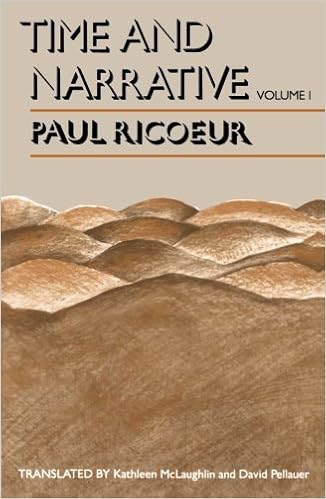
The Cartesian Meditations translation is predicated totally on the broadcast textual content, edited via Professor S. Strasser and released within the first quantity of Husserliana: Cartesianische Meditationen und Pariser Vortrage, ISBN 90-247-0214-3. such a lot of Husserl's emendations, as given within the Appendix to that quantity, were taken care of as though they have been a part of the textual content. The others were translated in footnotes. Secondary attention has been given to a typescript (cited as Typescript C) on which Husserl wrote in 1933: Cartes. Meditationen / Originaltext 1929 / E. Husserl / fur Dorion Cairns. Its use of emphasis and citation marks conforms extra heavily to Husserl s perform, as exemplified in works released in the course of his lifetime. during this admire the interpretation frequently follows Typescript C. in addition, a few of the version readings n this typescript are ultimate and feature been used because the foundation for the interpretation. the place that's the case, the printed textual content is given or translated in a foornote. the broadcast textual content and Typescript C were in comparison with the French translation by means of Gabrielle Pfeiffer and Emmanuel Levinas (Paris, Armand Collin, 1931). using emphasis and citation marks within the French translation corresponds extra heavily to that during Typescript C than to that during the broadcast textual content. frequently, the place the wording of the printed textual content and that of Typescript C vary, the French translation shows that it was once in line with a textual content that corresponded extra heavily to 1 or the opposite often to Typescript C. In such instances the French translation has been quoted or pointed out in a foornote.
Read Online or Download Cartesian Meditations: An Introduction to Phenomenology PDF
Best Phenomenology books
Time and Narrative, Volume 1 (Time & Narrative)
Time and Narrative builds on Paul Ricoeur's past research, within the Rule of Metaphor, of semantic innovation on the point of the sentence. Ricoeur right here examines the production of which means on the textual point, with narrative instead of metaphor because the ruling obstacle. Ricoeur reveals a "healthy circle" among time and narrative: time is humanized to the level that it portrays temporal adventure.
Phenomenology, including Marxism, pragmatism, and analytic philosophy, ruled philosophy within the 20th century—and Edmund Husserl is mostly inspiration to were the 1st to increase the concept that. His perspectives inspired numerous vital later thinkers, resembling Heidegger and Merleau-Ponty, who ultimately became phenomenology clear of questions of information.
The philosophical paintings of Jean-Luc Marion has opened new methods of talking approximately non secular convictions and stories. during this exploration of Marion’s philosophy and theology, Christina M. Gschwandtner offers a complete and important research of the information of saturated phenomena and the phenomenology of givenness.
Extra resources for Cartesian Meditations: An Introduction to Phenomenology
That, nonetheless, this proceeding is, and has to be, a “meaning extra” of a similar turns into proven simply by means of the proof of a potential making specified and, eventually, of an intuitive uncovering, within the type of genuine and attainable persevered perceiving or of attainable recollecting, as whatever to be performed on my initiative. The phenomenologist, although, doesn't inquire with in simple terms a naive devotedness to the intentional item in simple terms as such; he doesn't contemplate the intentional item purely straightforwardly and explicate its intended good points, its intended elements and houses. If that have been all he did, the intentionality, which makes up the intuitive or non-intuitive recognition itself and the explicative contemplating, could stay “anonymous”. In different phrases: There could stay hidden the noetic multiplicities of attention and their artificial solidarity, via advantage of which on my own, and as their basically useful unitary doing [ihre wesensmdssige Einheitsleistung ], we have now one intentional item, and consistently this yes one, constantly intended — have it, in an effort to converse, sooner than us as intended hence and so; likewise the hidden constitutive performances through advantage of which (if attention then keeps as explication) we discover straightforwardly, as explicata of what's intended, things like a “feature”, a “property” 1 a “part”, or suggest those implicitly and will then detect them intuitively. while the phenomenologist explores every thing goal, and no matter what are available in it, solely as a “correlate of consciousness”, he doesn't reflect on and describe it in simple terms straightforwardly and in basic terms as by some means similar again to the corresponding Ego and the ego cogito of which it's the cogitatum. relatively, along with his reflective regard, he penetrates the nameless “cogitative” lifestyles, he uncovers the convinced man made classes of the manifold modes of attention and, / extra again, the modes of Ego-comportment, which make comprehensible the target affair’s uncomplicated meantness for the Ego, its intuitive or non-intuitive meantness. Or, said extra accurately, they make it comprehensible how, in itself and via advantage of its present intentional constitution, recognition makes attainable and worthwhile the truth that such an “existing” and “thus decided” item is meant in it, happens in it as one of these feel. therefore, in relation to conception of a spatial factor, the phenomenologist (abstracting firstly from all “significance” predicates and proscribing himself merely to the “res extensa”) explores the style during which the altering “sight things”, and “things” of the opposite senses, have in themselves the nature of appearances of this related resAuthor’s marginal notice: substratum. extensa. in relation to any spatial factor, he explores its fifty four (potential and maybe real) altering views; additionally, in regards to its temporal modes of givenness, the differences of its being nonetheless meant whereas it sinks retentionally into the previous and, with appreciate to the Ego, the modes of his in particular personal still-having and keeping, the modes of consciousness, etc.



